

We may earn revenue from the products available on this page and participate in affiliate programs. Learn More ›
If you routinely transfer your clean laundry directly from the washing machine into the adjacent dryer, it may be time to break the habit. There are many good reasons to air dry your garments and linens, not the least of which is that fresh, crisp scent and feel you only get from laundry that blows in the breeze.
- You’ll save money. After your central heating and air-conditioning system, your electric dryer is perhaps the biggest energy sucker in your home, representing, on average, around 6 percent of your home’s energy consumption each year. That’s a big savings on your utility costs!
- Air drying is better for the environment. According to Green America, the average household can reduce its carbon footprint by 2,400 pounds a year by hanging laundry to dry instead of using the dryer.
- Your clothes will fit better. Have you ever put your favorite pair of jeans into the clothes dryer only to pull out a pair that’s about a size too small to zip? Dryers are notorious for shrinking fabrics, particularly absorbent ones such as cotton, wool, rayon, and linen. As high heat and tumbling action suck away moisture, fabric fibers pull together tightly and curl up in response, resulting in clothes that no longer fit.
- Your clothes will last longer. Air-drying is much gentler on your garments than a dryer. The combination of heat and tumbling weakens fabric fibers, causing tiny bits to break away—that’s what creates the fuzz in your dryer’s lint trap. Natural fibers, particularly cotton and wool, are more prone to shedding lint than synthetic fabrics are. Both kinds are damaged during the drying process, which results in thinned-out towels and worn edges along your clothing.
If you’re ready to give air-drying a try, your first order of business is to check local ordinances, because neighborhoods with homeowner associations may prohibit hanging clotheslines. Once you confirm that you’re in the clear, follow these dos and don’ts for great results.
RELATED: 8 “Zero Dollar” Laundry Room Hacks
DO keep your clothesline clean.
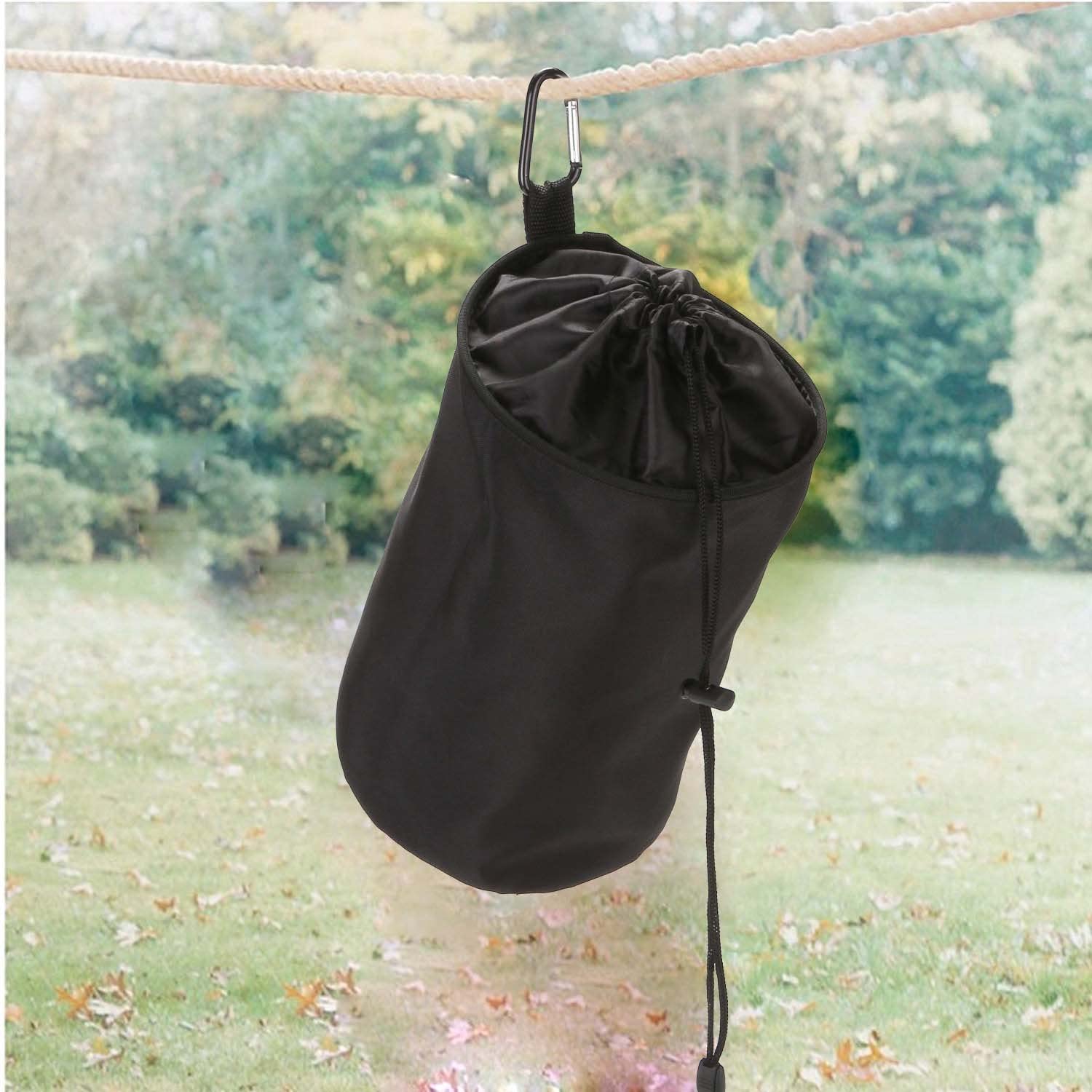
Wipe your outdoor clothesline clean of dust and bird droppings before hanging freshly laundered garments, linens, and towels. When taking down your dry duds, don’t leave the clothespins clipped to the line between uses. The pins can rust, which can stain your clothes. Instead, store clothespins in a handy sack, like this clothespin bag from Veamor made of sturdy Oxford fabric. It clips right to your clothesline, belt loop, or drying rack.
DON’T forget to check pollen and weather reports.

If you suffer from hay fever or other pollen-based allergies, it’s wise to avoid drying clothing outside on days when pollen counts are high. Most weather apps provide this information, but if yours doesn’t, enter your ZIP code on Pollen.com for your area’s daily forecast. If the forecast is inauspicious—be it high pollen or heavy rain—dry laundry indoors on a foldable rack. This 2-level drying rack from SONGMICS was the top pick in our researched guide to the best clothes drying racks.
DO hang the largest items first.
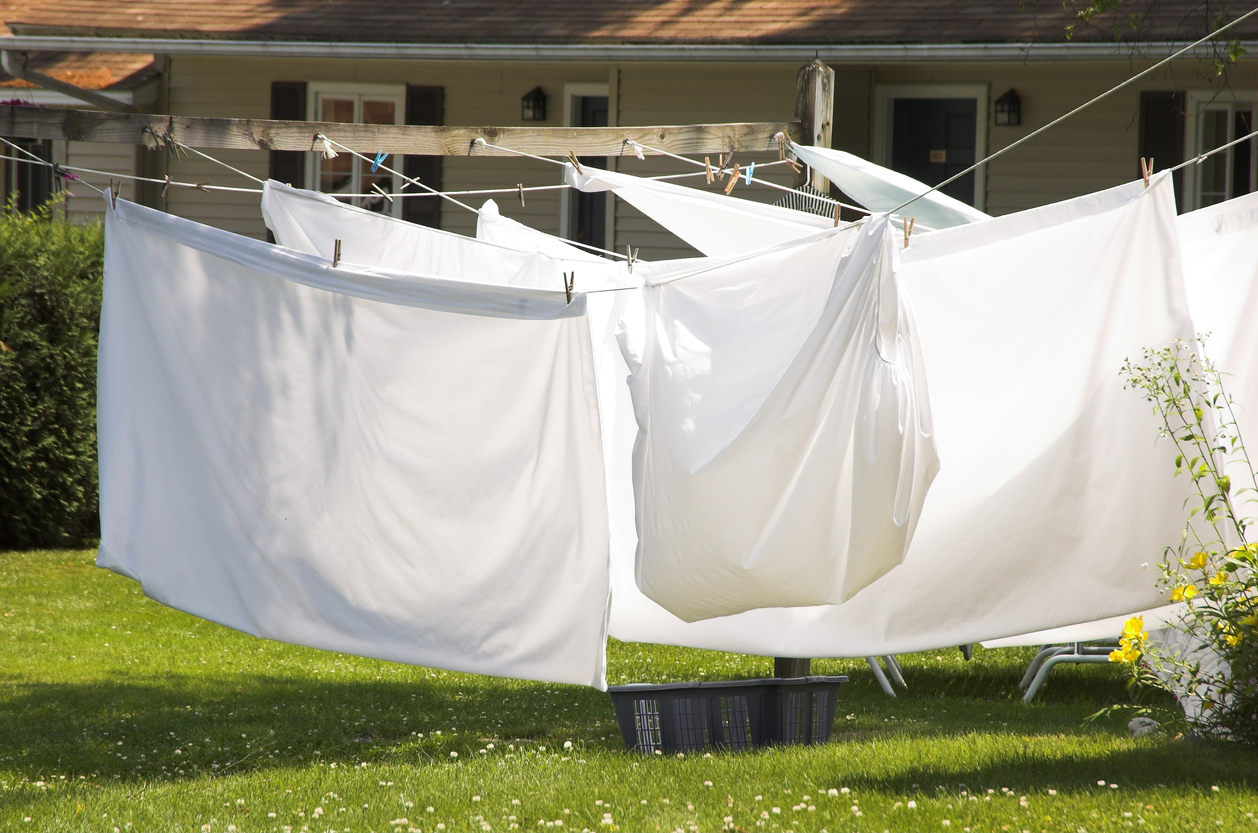
When hanging sheets, towels, and clothing on the same clothesline, start with the sheets, then hang the towels, and hang your clothing last. That way, you can make the most efficient use of space on the line. Leave at least an inch or so between items for good airflow, which speeds up the drying process.
DON’T hang sweaters or other heavy garments.
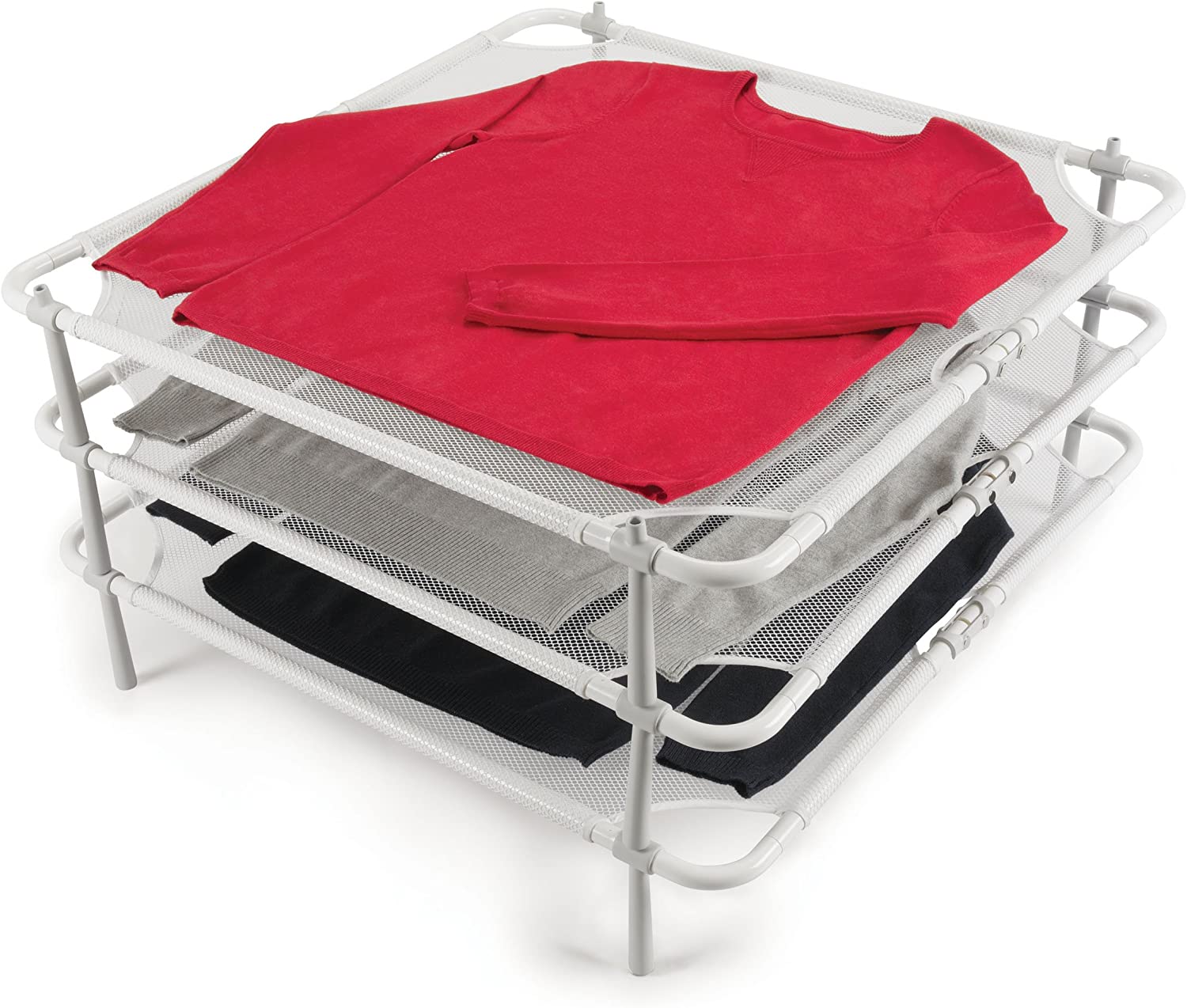
When air drying clothes indoors, forget about hanging your knit sweaters from a clothesline or indoor rack; it will lead to saggy shoulders and misshapen sleeves. Instead, lay sweaters, jackets, and heavy knit shirts on a flat rack like this easy-to-fold, mesh drying rack from OXO Good Grips. Turn garments over once or twice as they dry to speed up the process and maintain even drying. Moisture tends to settle at the bottom of heavy fabrics.
RELATED: 19 Laundry Mistakes You’re Probably Making
DO give clothes a shake before air-drying them.

To stave off the stiffness that can occur on air-dried clothing and linens, give each piece a good shake before hanging it on the line or drying rack. Shaking fabric fresh out of the washing machine helps fluff up its fibers to prevent stiffness and keep it from clinging to itself. Be sure to fully stretch out your clothing to keep wrinkles at bay.
DON’T forget to turn on a fan if you’re air-drying indoors.
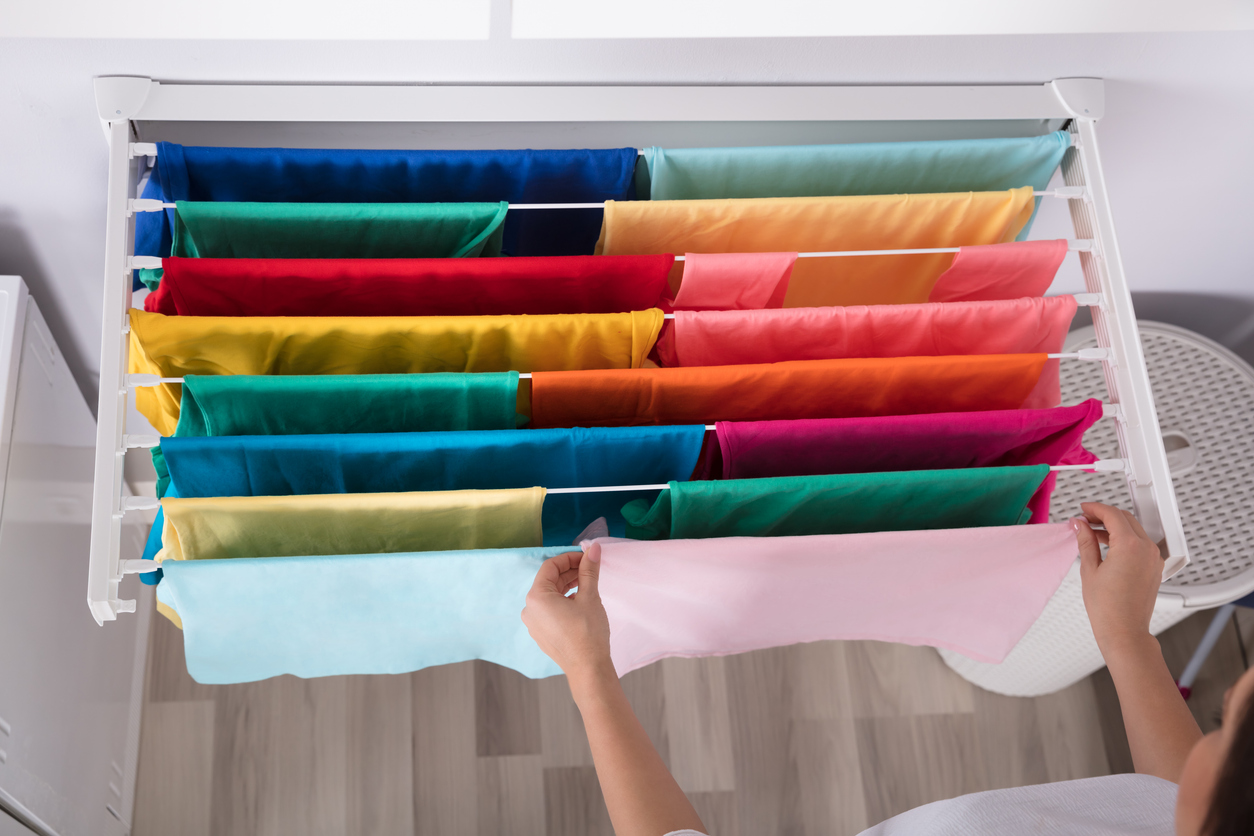
A gentle breeze is ideal when you’re air-drying clothing outside, because it whisks away moisture, and creates good airflow around the wet laundry. Can you air dry clothes inside and get similar results? You bet! Simulate a breeze for an indoor clothesline by turning on a ceiling fan or portable fan in the same room as your laundry. If there’s no fan at hand, open the windows.
RELATED: 8 “Zero Dollar” Laundry Room Hacks
DO hang laundry properly.
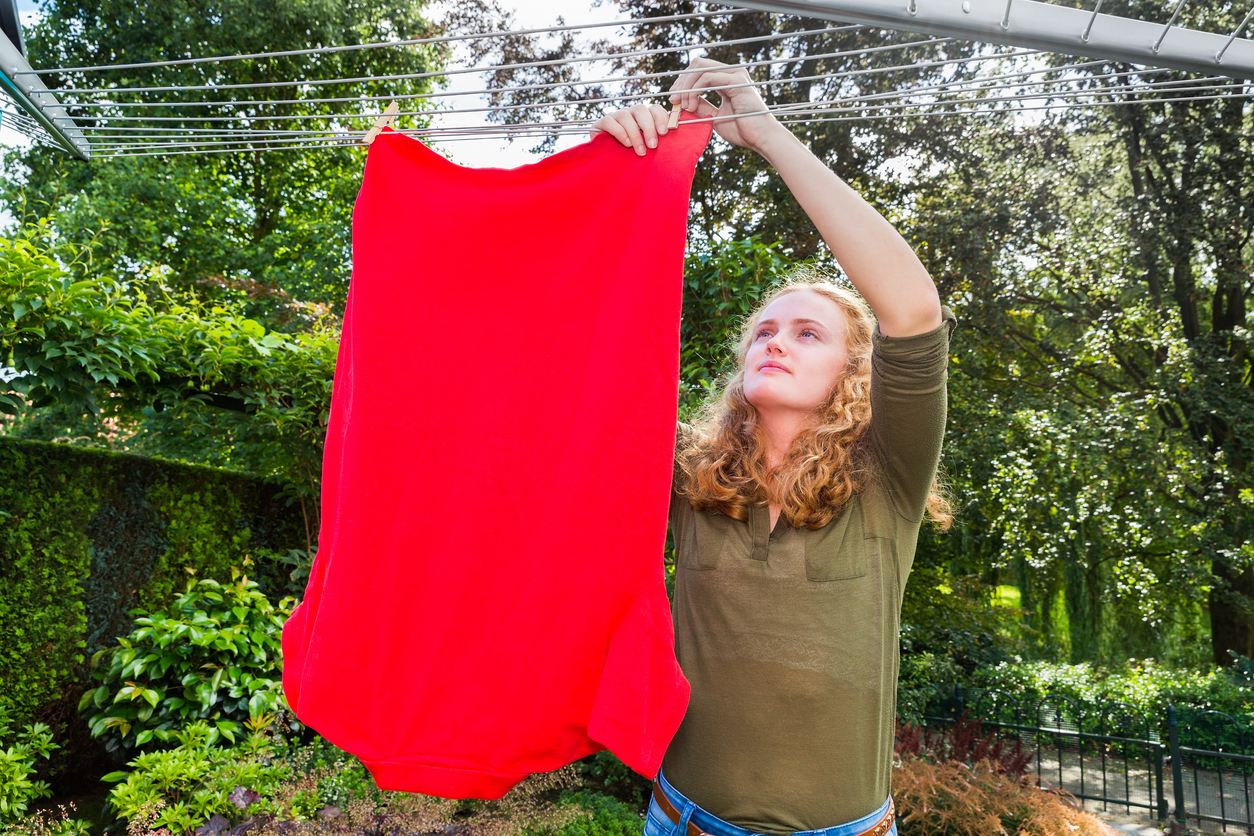
Hanging wet laundry properly helps it to dry quickly and with few wrinkles. Here’s how to do it:
- Pants: Line up the inner seams and then pin them to the clothesline or drying rack by the hems, not the waistband. As the slightly heavier waistband hangs down, it will exert a bit of tension on the fabric, helping pull away wrinkles.
- Knits: Pin knit T-shirts, skirts, and other garments upside down. The thicker fabric of the hem isn’t as likely to sag or show clip marks as the shoulders.
- Woven shirts: Ideally, dry these on hangers. If you’re using clothespins, clip the shirts by the bottom hems and cuffs.
- Small garments: Socks, underwear, babies’ or children’s clothing, and swimsuits aren’t heavy enough to sag when damp. Hang them in whatever position makes the most effective use of your drying rack or clothesline space.
- Sheets: Fold in half and then pin to the clothesline by the corners. Add an extra clip or two in the middle for better security on breezy days. Flip the sheets halfway through the drying process to release moisture that’s gathered at the bottom of the fabric.
- Towels: Pin by the corners for a clothesline, or fold evenly over a drying rack. Either way, they will dry faster if you flip them once the top feels dry, but the bottom is still damp.
RELATED: The Best Clotheslines
DON’T dry bright and dark fabrics in direct sunlight.
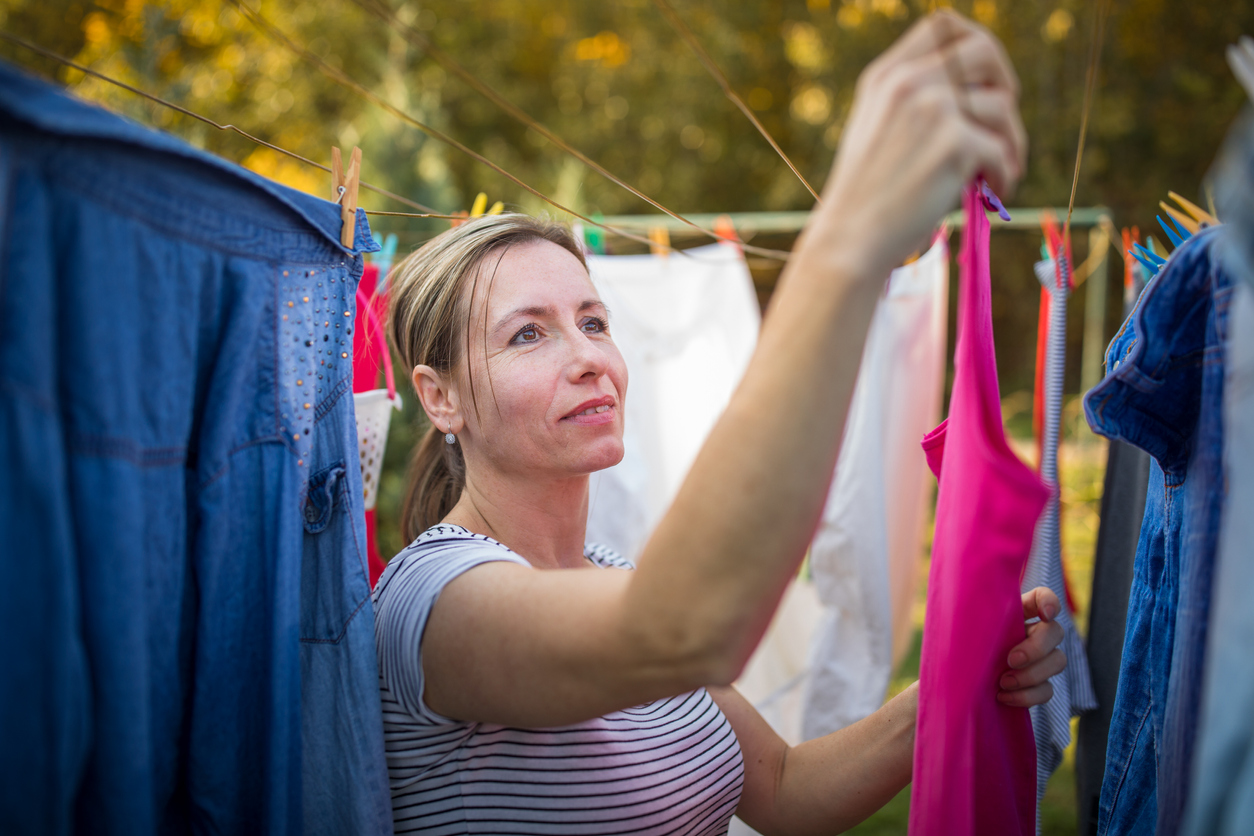
Direct, intense sunlight breaks down the dyes used on fabrics and leads to fading. When air-drying dark or bright garments outside, the rack or clothesline should be in a shaded but warm spot, preferably with a slight breeze for better airflow.
DO let the sun bleach light fabrics.
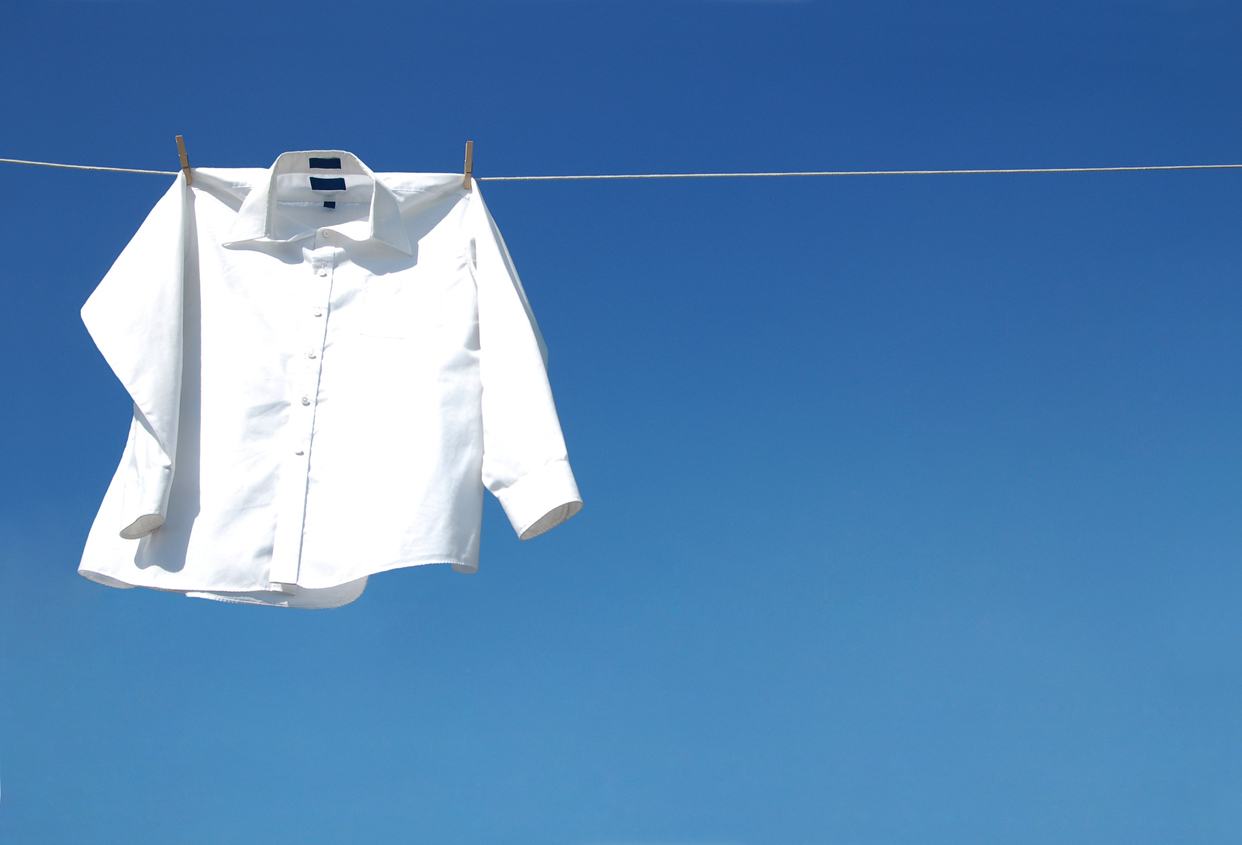
Take advantage of the sun to help bleach out white clothing and linens by setting these fabrics in full-sun, slightly breezy locations. Full sun is also the best for air-drying socks and underwear, because the sun’s UV rays quite effectively kill the bacteria that cause odor on these types of garments.
DON’T air-dry down garments or bedding.

When it’s wet, down tends to clump. Dry your down comforters, jackets, and pillows in the dryer, preferably with some new tennis balls. The tumbling action helps restore down to a fully fluffy state. Air-drying these types of garments can leave them lumpy or misshapen.
DO fold laundry as you remove it from the line.

To keep your dry clothes crisp and clean, fold them as you pull them from the drying rack or clothesline and put them away immediately. Garments that sit in the laundry basket will soon wrinkle.
RELATED: 13 Tricks for Getting Your Laundry Folded Faster
DON’T be impatient.
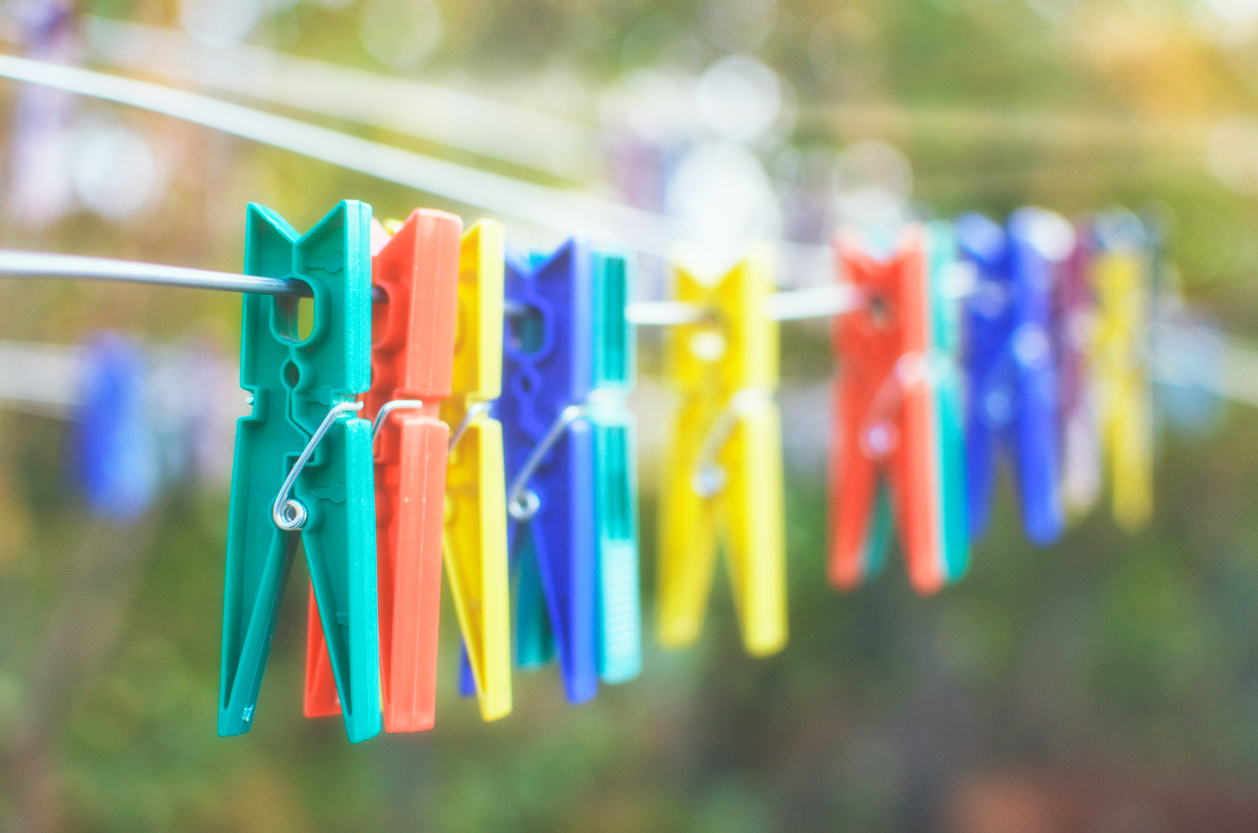
How long do clothes take to dry when they’re hung outside? Unless the forecast calls for a summer scorcher, it’s going to take longer for clothes to air-dry than to dry in your machine. While it’s hard to generalize about how long it will take your laundry to air-dry—fabric type, air temperature, and presence or absence of wind all play a part—expect it to take 2 to 4 hours for most types of fabric on a pleasantly warm day with a light breeze. Just remember to never put away clothes or linens when they’re damp, which would invite mold and mildew.
DO use plastic hangers.
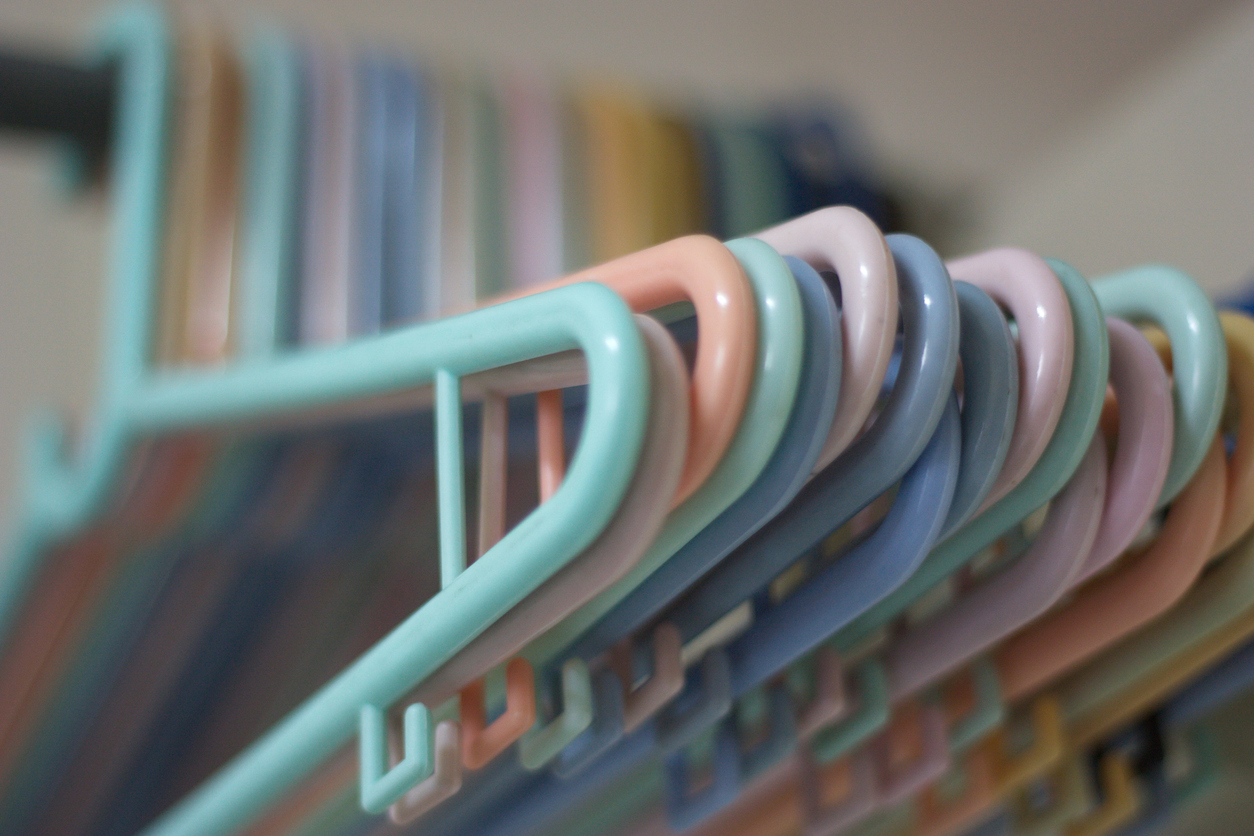
When air-drying clothing on hangers, the type of hanger you use matters. Thin plastic hangers are the best choice when drying delicate items because they’re the least likely to warp clothing. Avoid velvet hangers, which can become moldy when damp, as well as wooden hangers, which can expand and crack if the wood gets wet. Finally, don’t use metal hangers. If they rust, they will stain fabric.
DON’T forget to blot wet towels before hanging them.
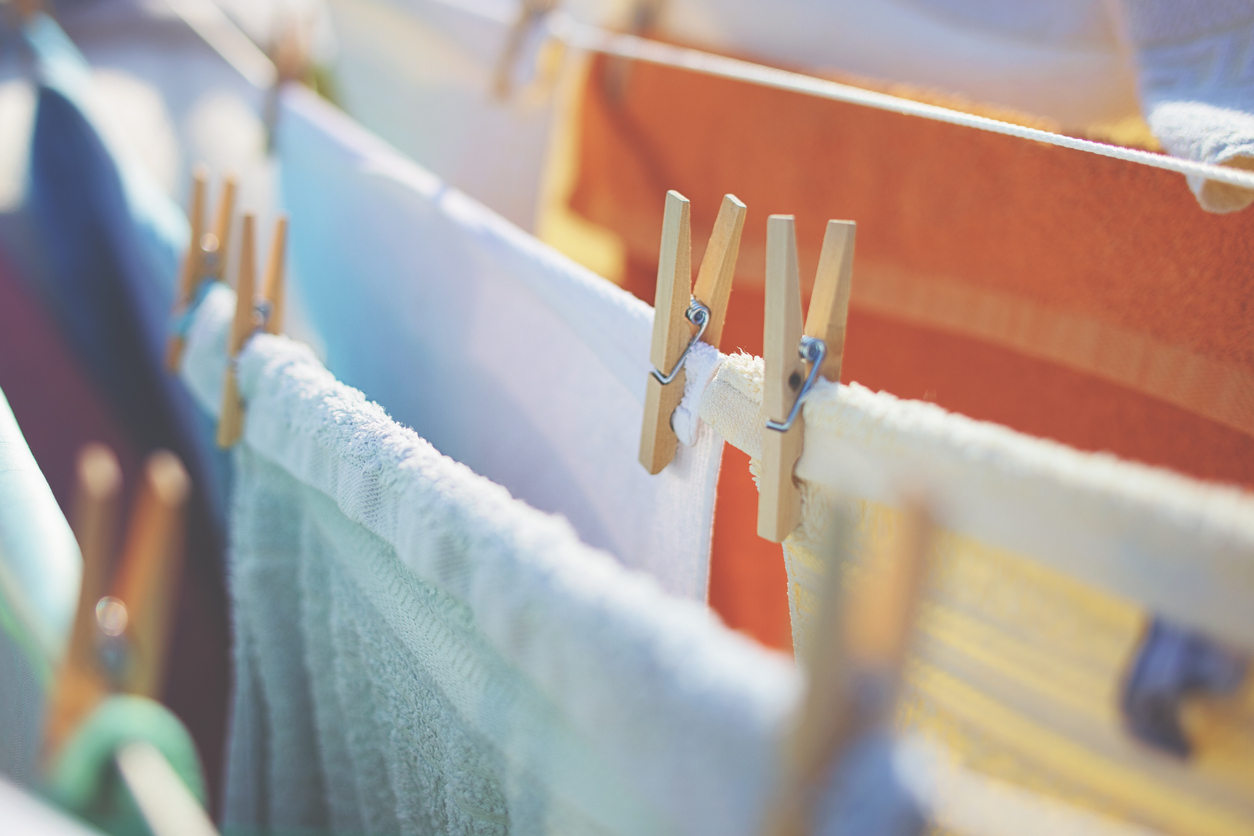
Bath towels are meant to be absorbent, and become supersaturated with water when they’re laundered. They can take hours to dry without the use of a dryer. Those who prefer hanging their towels on a clothesline can try this trick to speed up the process: Use a dry towel to blot excess moisture from wet towels before hanging them on the clothesline. The dry towel will become quite damp, so it should also be hung out to dry.
RELATED: Quick Tip: An Easy Refresh for Stinky Bath Towels
DO start early in the day.
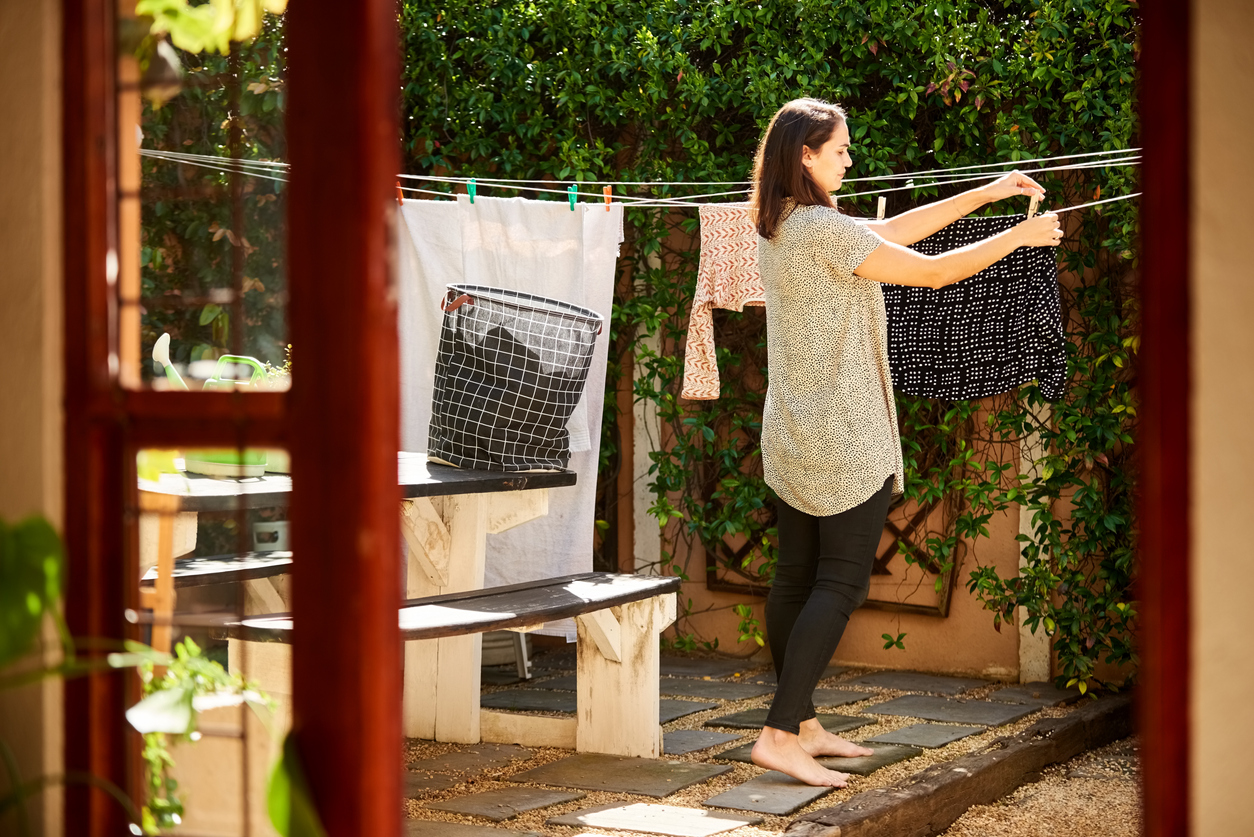
Weather permitting, hang laundry out to dry early in the day to make the most of its time in the sun, particularly if you’re trying to dry large, heavy items before the sun sets.
